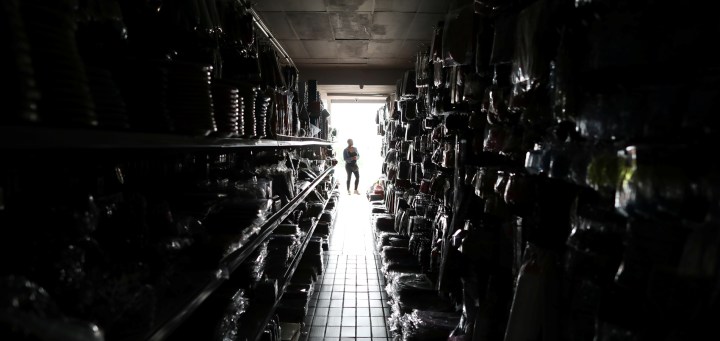SPONSORED CONTENT
Loadshedding is not forever

An end to loadshedding as soon as next year is possible, according to the Energy Council of South Africa. But this will require a collaborative effort by both Eskom and the private sector.
If you’ve ever entered the lottery, you’ll know that deflated feeling when the winning numbers are inexplicably not yours. Oh, the things you could have done with those millions! When events fall short of what we expect – reasonable or not – it’s natural to feel discouraged.
As South Africans, inspired perhaps by the examples of greatness in our long and storied history, we set a high bar for what’s possible; it’s why we continue to produce pockets of excellence envied by the ‘first’ world. But when it comes to the performance of our country’s critical infrastructure, we have learnt to temper our expectations. That said, despite the failings of recent years, there is no call for despair.
How low can you go?
It’s by now generally accepted that significant economic growth will remain impossible for South Africa until electricity shortages are addressed. “For Eskom not to be a binding constraint on SA GDP growth, the Energy Availability Factor (EAF) needs to average about 70% for the year. Then 3% growth is a reality. At 60% EAF, we can’t grow.”
That’s according to Chris Holdsworth, Chief Investment Strategist at Investec Wealth & Investment, who presented his big-picture views during an event on self-generation for businesses at Investec’s Sandton offices. He was talking to a slide that plotted the collapse of Eskom’s Energy Availability Factor during the past five years.
To gauge how far our expectations of Eskom have fallen, consider that it won Power Company of the Year at the Global Energy Awards in 2001. Just nine years later, as state capture gnawed at the utility’s funds, skill and integrity, Eskom spiralled into a deepening leadership crisis, churning through 13 CEOs in 10 years. Crippling debt from the corruption-riddled Medupi and Kusile builds has left the power utility technically insolvent for over five years. We no longer say ‘ahhhh’ when the lights go out. It is what it is.
Unreliable power is not the only consequence of Eskom’s demise. As we’ve scrapped for a watt here and a watt there, the rest of the world has shifted to clean energy production. Holdsworth gave us the numbers:
- 86% of our power is generated using coal, the highest proportion of all G20 members. India (74%) and Indonesia (61%) round out the polluter’s podium.
- Despite our enviable sun and wind endowments, only 8% of our power comes from renewables compared to a global average of 29%. Brazil generates 77% of its power from clean energy.
With our biggest trading partners currently designing tariffs on goods and services from high-emission countries, those figures matter a great deal.
Please say that again
When something has been a certain way for a long time, it’s hard to imagine it being any other way. But, like facemasks during the Covid years, loadshedding doesn’t have to be a permanent way of life for South Africans. This was the message from James Mackay, CEO at Energy Council South Africa, who presented one of the keynotes at the Investec self-generation event.
“In today’s presentation, we’re going to paint a clear technical pathway that puts loadshedding to bed by the end of 2024.”
You’re not alone if your first thought was, pull the other one, James. Mackay’s counterparts at Investec also see a near-term end to loadshedding, but a little further out: about three to four years from now. Either way, there seemed to be a fresh breath of optimism in the room.
Mackay went on to provide compelling on-the-ground detail of Eskom’s total power capacity, what’s currently offline and why and when those gigawatts will be coming back online. “The reality is that we are in a structural stage 4 to 6 for the rest of this year, so 2023 will be our toughest year. We have roughly 47.5 gigawatts of capacity; The Energy Availability Factor bottomed in March/April this year at 51% but has made a bit of recovery to 53%.”
He went on to outline several interventions by the National Energy Crisis Committee (NECOM) to return several power stations to service and applauded improvements in Eskom’s wheeling rules and tariff reforms, which will spur private energy investments. “We are also expecting accelerated public procurement bid windows. When adding up all these opportunities, we’re looking at up to 9GW of power opportunity that can be targeted over the next 18 to 24 months. That could end load shedding.”
He also added some anecdotal evidence in support of his positive outlook:
Stopping the bleed
“Andre de Ruyter’s book is an example of how corruption and poor performance have been paraded for all to see, and is spurring a real response and action. I recently spoke with the SAPS general who’s been tasked with supporting the SOEs and real progress is being made as they are clamping down on cartels and corruption built around the power stations. It’s not perfect, but there’s definitely action.”
Public-private collaboration
The formation of NECOM under the Presidential Action Plan is targeting two key objectives of fixing Eskom and fundamentally transforming the energy sector, which Mackay regards as a positive structural shift. “Business and government have committed to work in partnership to address the common structural challenges of implementation and ensure strong political leadership to embed key sector reforms. It’s a level of cooperation we’ve never seen before.”
Corporate belief
“In speaking to the banks, there’s a view that, despite tough economic times, credit extension is actually running hard. Corporates are investing. There’s also been a pledge signed by 115 CEOs in South Africa, including Investec’s, signalling a shared belief that the country and its power infrastructure can be rebuilt.”
In short, the notion that loadshedding could be gone by the end of next year might not be a pipe dream after all.
The unbundling of power
A point of consensus was that Eskom must be part of the solution, albeit not in its current form. Critically, the planned restructuring of the utility into an independent transmission company and market operator is more urgent than ever. While Eskom’s role in power generation is likely to be significantly diminished, we will be dependent on coal generation for many years to come. Mackay is of the view that “an aggressive renewable energy transition is unlikely, meaning that we may have to keep coal on for longer. Many leading global economies are struggling with similar challenges as they transition their energy sectors, so we must also realise that these are not unique to South Africa but that we are well behind our international peers.”
As important as the unbundling of Eskom is the recent momentum around renewable energy in SA. The numbers in Holdsworth’s presentation were eye-opening:
- South Africa now has 4.4GW of solar capacity installed, at a not insignificant investment of roughly R20 billion per GW.
- Our solar panel imports from China have rocketed. During the first half of 2023, we imported the same number of panels as Japan, despite our economy being an order of magnitude smaller than theirs.
“We’re punching above our weight in terms of solar panel imports. We still have a lot of catching up to do, but we’re not walking anymore, we’re running,” said Holdsworth.
There is, however, a significant downside to rooftop solar: lost income for already-stretched municipalities. Markups on electricity have historically been one the biggest revenue generators for our cities and towns, and now many of the customers paying the most for power – not to mention those most likely to settle their electricity bills at all – are getting it for free from the sun.
This tension goes to the heart of the political pushback against the aggressive decarbonisation pathway envisaged in our climate legislation. “We are really at the very early stages of the transition and must urgently first recover our energy deficit using all technologies available to us,” says Mackay. “If not, we face the most unjust energy transition where access to energy is becoming a function of income, which we know will just exacerbate our social challenges. Ensuring a sustainable value proposition through the energy transition for municipalities is a growing challenge and must be prioritised.”
Even headwinds power turbines
To be sure, the next 6 – 12 months will be difficult for business and government. Stages 4 – 6 will be a feature for the rest of 2023 and as the US and Europe head for recession, we will see lower exports and tax revenues.
But the lights are brightening in other areas. The costs of production inputs have fallen precipitously across the globe, which translates into healthier margins for businesses and better prices for consumers.
Longer-term, South Africa remains poised to flourish during the energy transition. We have the sun and wind to support massive renewables capacity. And we have the metals and minerals – including roughly half of the world’s manganese and chromium production – that the world needs to decarbonise.
Imagine, believe, act
To say that expectations of energy availability in South Africa have been subdued would be an understatement. A rapid change in that outlook could inject confidence into our economy, supporting the investment and growth we so desperately need. Indeed, it’s estimated that the transition from a state-dominated to private sector-led power sector represents an investment opportunity well in excess of R1 trillion by 2030.
On a micro level, not having to worry about power cuts would free up businesses to focus on profitability, competitiveness, and growth. It would support better customer service and, critically, higher employment. And without the daily frustrations caused by loadshedding, employees, on balance, will be happier and more productive.
It is entirely possible that, by 2025, we will once again regard power cuts as the rare exception rather than the norm. It’s time we start believing in and planning for an era of uninterrupted power. DM
















